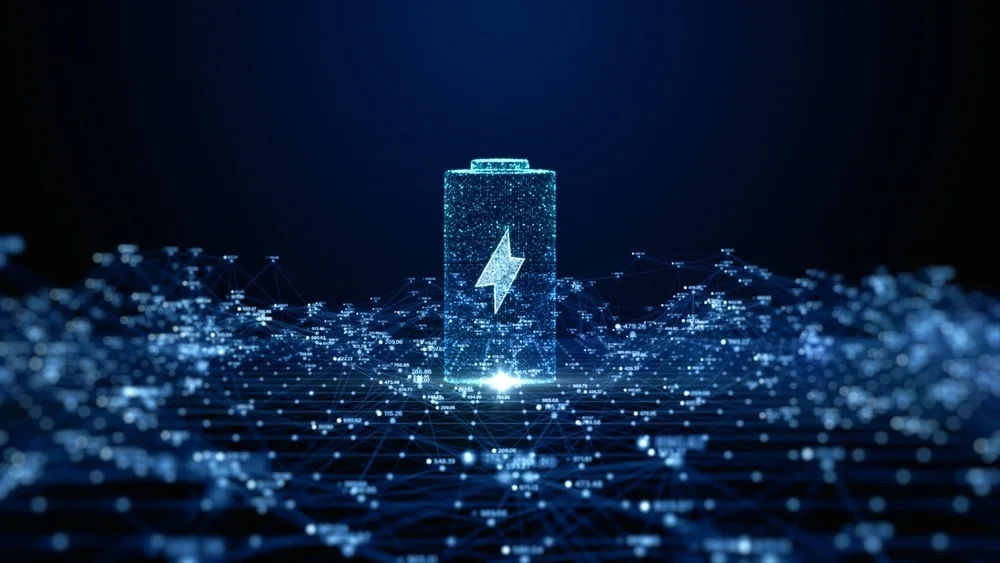Blog Credit: Trupti Thakur
Image Courtesy: Google
GERMI’s UltraCapacitor
Scientists at the Gujarat Energy Research and Management Institute (GERMI) have achieved a breakthrough in energy storage technology with the development of a paper-based supercapacitor.
- This cutting-edge supercapacitor, derived from seaweed,boasts remarkable attributes such as being lightweight, biodegradable, and capable of fully charging a device within a mere 10 seconds.
What is a Paper-based Supercapacitor?
- About:
- The paper-based supercapacitor developed by GERMI researchers is the thinnest and most lightweight of its kind.
- By leveraging cellulose nanofibers derived from seaweed, the team successfully created an anodic paper supercapacitorthat exhibits exceptional tensile strength, performance, and cost-effectiveness.
- Applications and Business Prospects:
- The applications ofthis innovative supercapacitor are vast, spanning electronics, memory backup systems, airbags, heavy machinery, and electric vehicles.
- Consequently, it presents a lucrative business prospect for industries seeking high-performance energy storage solutions.
- The technology’s versatility and eco-friendly nature make it an attractive option for both manufacturers and consumers.
- The Potential of Marine Cellulose:
- The paper supercapacitor owes its remarkable properties to the marine cellulose-based material derived from seaweed.
- This material holds immense potential for integration into various smart electronic devices.
- Additionally, the cultivation of seaweed can serve as a source of revenue for coastal communities,creating economic opportunities and sustainable development.
What is a Supercapacitor?
- A supercapacitor is an electrochemical charge storage device. They are also known as ultracapacitors.
- It has significant advantages such as high-power density, long durability, and ultrafast charging characteristics as compared to conventional capacitors and Lithium-Ion batteries (LIB).
- Main components of supercapacitors include electrode, electrolyte, separator, and the current collector.
What are Seaweeds?
- About:
- Seaweedsare macroalgae attached to rock or other substrata and are found in coastal areas.
- They are classified as chlorophyta (green), rhodophyta (red) and phaeophyta (brown) on the basis of their pigmentation.
- Among them, chlorophyta holds more potential components — carbohydrates, lipids, proteins and bioactive compounds.
- Significance:
- Nutritional Value:Seaweeds are rich in essential nutrients, including vitamins, minerals and dietary fibre.
- For Medicinal Purpose:Many seaweeds contain anti-inflammatory and anti-microbial agents. Certain seaweeds possess powerful cancer-fighting agents.
- Bioindicator: When waste from agriculture, industries, aquaculture and households are let into the ocean, it causes nutrient imbalance leading toalgal blooming, the sign of marine chemical damage.
- Seaweeds absorb the excess nutrients and balance out the ecosystem.
- Oxygen Production:Seaweeds, as photosynthetic organisms, play a vital role in marine ecosystems by producing oxygen through photosynthesis, sustaining the respiration and survival of marine life.
- Cellulose Content:Green seaweed that is collected from the Porbandar coast of Gujarat has a high amount of a particular type of cellulose in its cell wall.
- Cellulose is found to be the most suitable biopolymer material for manufacturing paper-based electrode materialssuch as batteries for energy storage applications.
- Cellulose itself is an insulating material that requires to be coated with conductive materialto make a paper-based energy storage device.
- Seaweed Cultivation:
- Out of the global seaweed production of around 32 million tons of fresh weight valued around USD 12 billion.
- China produces approximately 57%, Indonesia 28% followed by South Korea, whereas India has a mere share of ~0.01-0.02%.
- By an estimate, if cultivation is done in ~10 million hectares or 5% of theExclusive Economic Zone area of India, it can provide employment to ~ 50 million people, contribute to national GDP, lead to ocean productivity, abates algal blooms, sequesters millions of tons CO2, and could produce bio-ethanol of 6.6 billion litres.
Blog By: Trupti Thakur

28
MayGERMI’s UltraCapacitor
May 28, 2024Recent Blog
The New Accessibility Feature of AppleMay 14, 2025
The Digital Threat Report 2024May 13, 2025
The MADMAX ExperimentMay 12, 2025
The EntraID Data ProtectionMay 10, 2025
The MAHA-EVMay 07, 2025




